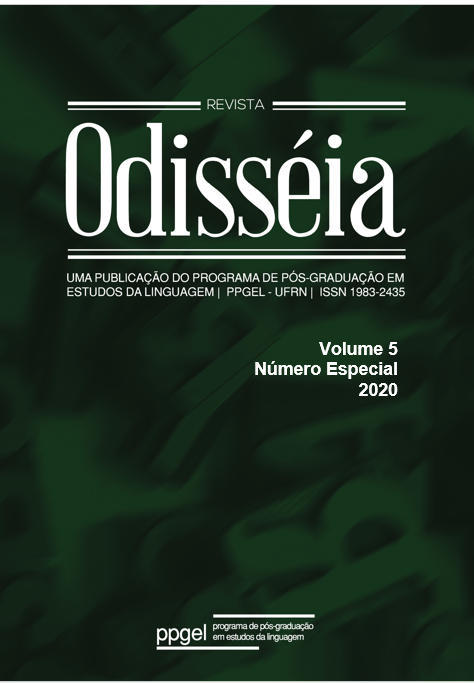Escrita não criativa e neuro-estética: conceitos, aspectos, possibilidades
DOI :
https://doi.org/10.21680/1983-2435.2020v5nEspecialID23037Mots-clés :
Escrita não criativa. Neuro-estética. Kenneth Goldsmith. Vanessa Place.Résumé
Uma das premissas da escrita não criativa prevê que o procedimento (o copie e cole) seja tão ou mais importante que o resultado final da obra, legando à audiência o entendimento que melhor lhe aprouver (GOLDSMITH, 2015). Queremos discutir formas desse “entendimento”, considerando alguns conceitos da neurociência, em particular os que se detêm sobre a relação mente, corpo e estética – a neuro-estética. Com o desenvolvimento das ciências cognitivas, passou-se à discussão dos processos artísticos, na qual termos como “emoção”, “sentimento estético”, “empatia” etc., foram vistos como objetos que funcionam segundo regras identificáveis na naturalização da relação espectador-obra-autor (COUCHOT, 2018). Exporemos o “não original” a isso, arriscando comentar obras como Traffic (2007), Trânsito (2016) e Hillary: The Hillary Clinton emails (2019), de Kenneth Goldsmith, Statement of facts, de Vanessa Place (apud Goldsmith, 2015), e a instalação Uma e três cadeiras (1965), de Joseph Kosuth.
Téléchargements
Téléchargements
Publié-e
Comment citer
Numéro
Rubrique
Licence

Este trabalho foi licenciado com uma Licença http://creativecommons.org/licenses/by-nc-sa/4.0

















